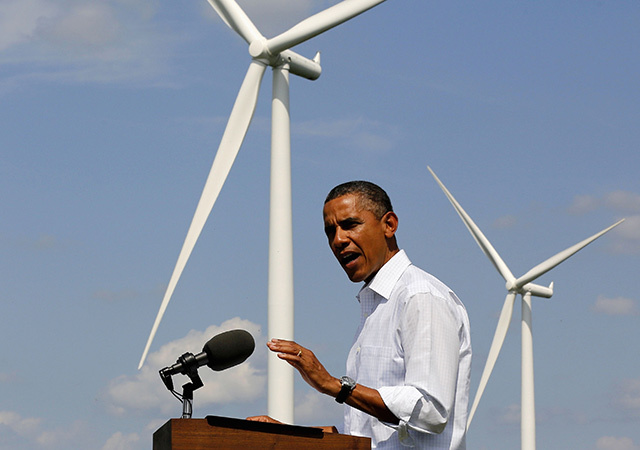
Despite stirring controversy in many locations, not least in the UK where even the small yet strategically important European Offshore Wind Deployment Centre is under threat from the Trump Organisation, the global wind market enjoyed robust growth last year.
However, this year and next are looking a bit shaky for some, though Europe is expected to get back into its stride again by 2015, helped by major North Sea developments getting under way.
Europe’s framework legislation and its 2020 targets ensure a degree of stability, but a recent wave of policy uncertainty combined with the on-going sovereign debt crises mean that investment during the current year is below par.
According to the Global Wind Energy Association (GWEC), capacity grew more than 10% compared with 2011. Moreover, the nearly 45GW (gigawatts) of new wind power brought on line represents investments totalling a staggering 56billion euros.
The new global total at the end of 2012 was 282.5GW, representing cumulative market growth of more than 19% across the two years compared with a 22% annual average of about 22% over the past decade.
Despite economic issues in the EU and political uncertainty in the US, GWEC reports that 2012 was a record year for both Europe and North America (US/Canada). Indeed, the US was top dog for 2012, beating China by the slimmest of margins.
That said, installations in Asia still led global markets, with North America a close second, and Europe not far behind.
A result of this was that, last year, the majority of wind installations globally were contained within the OECD (developed nations) club for the first time since 2009.
“This outcome was largely a result of the exceptionally robust US market combined with a stronger than expected European market,” says GWEC in its just published annual review.
By the end of last year, the number of countries with more than 1,000MW installed capacity had risen to 24 of which 16 are European.
“Europe had an exceptional year in 2012, exceeding all expectations by installing 12.74GW, bringing total capacity to nearly 110GW,” says GWEC.
But it goes on to warn: “In 2013 and 2014, however, the effects of the recent spate of policy disruptions in various markets will begin to take its toll, and it is expected that both years will see levels of installations below that of 2012.”
GWEC points out that the exceptional 2012 figures reflect orders made before the wave of political uncertainty that has swept across Europe since 2011, which is having a negative impact on the wind energy sector.
Despite the underlying uncertainties, wind represented 26% of all new EU power capacity installed last year, and investments in the range 12.8-17.2billion euros.
Wind is now meeting 7% of Europe’s electricity demand, up from 6.3% at the end of 2011 and 4.8% in 2009.
Last year, wind energy installations were led by Germany (21% of all new wind power capacity), the UK (16%), Italy (11%), Romania (8%) and Poland (8%).
In terms of total installed capacity, Germany leads again (30% of total wind power capacity), followed by Spain (22%), the UK (8%), Italy (8%) and France (7%).
GWEC observes: “Currently, the wind industry is being hit by the economic crisis and austerity measures being implemented across Europe. The year ahead will be tough, but the long-term prospects for the wind industry are bright, with European Commission and GWEC scenarios showing wind energy as the leading power generation technology by 2050.
“However, the most important long-term signal that the EU can give to investors now is the formalisation of 2030 renewable energy targets.”
Overall, the EU is almost 2GW (1.7%) behind its National Renewable Energy Action Plan forecasts for 2012 with member states falling behind, including the Czech Republic, France, Hungary, Greece, Portugal and Slovakia.
The economic bloc is expected to get back on track by 2015, and continue to grow towards achieving the 2020 targets laid out in European law for the remainder of the period.
Encouragingly, offshore installations in Europe passed the 1GW mark for the first time last year, accounting for about 10% of total installations in the EU over the period.
“This trend is expected to intensify during the next five years,” says GWEC. “Offshore installations should account for 3GW or more per year by 2017.
“Overall installations over the next five years will be about 63GW, bringing the cumulative total to more than 170GW by the end of 2017.”
Recommended for you
